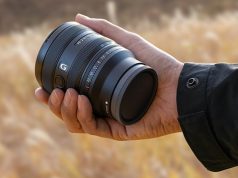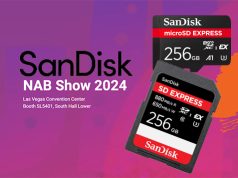Kodak recently sent out a press release on a survey made among 9,000 professional photographers claiming that 75% of them will continue to use film, even as they “embrace” digital photography. And, according to the survey, 68% of them actually prefer film to digital results. The top reasons Kodak cited for this preference were: 1) black and white photography (in that film yields better looking results than digital); 2) the “traditional” photographic look of film; 3) the ability to capture more information using medium and large format cameras; and 4) film’s wide exposure latitude and ability to better capture shadow and highlight detail. These results, by the way, were echoed in a similar study conducted in Europe. I suppose one has to consider the source of any information, but there’s no reason to doubt the veracity of Kodak’s findings or to question why certain photographers might have these feelings. Any new technology will engender those who tout the previous way of doing things, either from honest skepticism or from fear of the unknown. The question is, does this survey represent a true digital backlash, or is it just the last gasp of what Bob Schwalberg presciently described as “silver halide’s last gleaming”, when speaking of the doomed APS format when it was first introduced?
First off I think we have to separate the pro from the amateur marketplace. In the amateur ranks film is almost quite dead, at least judging from film sales, film camera sales and pure observation of what type of cameras people are commonly toting around these days. Working in New York City, which thanks to the tanked dollar is awash in tourists, I make a mental note of the type of camera folks are using as they snap away at Times Square, the Flatiron Building or whatever venue the large buses drop them off at on their tours. Being a grandparent I also attend my fair share of soccer games. If I see 10% of these folks using a film camera it’s a lot. And I can’t keep count of how many former minilabs have closed or changed what they sell. I recently passed such a former store, now selling mobile phones, bling and whatever, that still had their awning with Konica and Agfa film logos on it.
Pros: A Different Animal
But pros are another matter. They work day in day out capturing images, and make their living from delivering a superior product. But many pros report a serious erosion of their business due to digital, especially those in the event, senior and candid markets. It’s not that they can’t shoot digital; it’s that now everyone thinks they can duplicate the pro’s results with their Canon Rebel or even a 12MP point-and-shoot. Why hire a “photojournalist” style wedding shooter when you can give a couple of budget DSLRs to your cousins and have them deliver the same results? Why shouldn’t parents make their kid’s senior yearbook portrait with a cell phone camera? These challenges are real and have driven many pros to reconsider how they approach their work, what markets are viable and indeed how they make their living.
But does film in and of itself offer enough quality and differentiation to alter this equation, or is it the quality of vision pros can deliver and, in fact, convince their clients they can deliver that is the secret to their survival? Is it the medium, or the message? The clues might be in what Kodak reports in their survey.
Kodak tells us that just under half of pros surveyed consider film superior in capturing more information when using medium and large format cameras. You can create a rough equivalent of film to digital in terms of “information”, and given equivalent gear (say a Hasselblad loaded with film and one with a digital high MP back) I’d say the information per se delivered is roughly equivalent. It’s in the handling of the back, and indeed in the handling of the information, where the differences might reside. It’s also in how that information (read image) is used. Many years back catalog houses switched from film to digital capture, not because of the supposed superiority of digital, but because of the demands of efficient reproduction. This was a clear case of the tail wagging the dog and many a studio struggled with getting consistent, quality digital results, not to mention the costs of changeover. But the simple answer was: no digital capture, no work.
The irony of course is that regardless of capture medium the vast majority of prints these days are done digitally, and not with projection printing. I don’t know of any successful, major lab today that does not scan every piece of film that comes into the house. Does this level the playing field in terms of film capture to print? Does any “information advantage” come through when all goes into the same funnel? There’s no question that you get more detail when you start with a larger file, or a larger piece of film. But I have a feeling this has more to do with the expense of digital backs for pro use and the learning curve involved than with any measurable quality difference at the end of the day.
That Certain Look
Another reason that a bit less than half of those surveyed prefer film is that it yields a “more traditional photographic look.” There’s really no arguing with this, unless of course you consider the above production flow. Some photographers surveyed give anecdotal evidence about this being a clear advantage when shooting in black and white. Now, there is no doubt that a silver print and an inkjet or whatever print has a different look and feel. There is a luxuriousness to silver that no digital print, regardless of paper quality, can quite match. But the point is that these are different mediums, one where the image seems to emerge from the paper itself (silver) and the other where the image seems to sit atop the paper as applied ink. The question remains, of course, as to how many photographers and especially labs are still developing prints in chemicals. I for one, having worked in a darkroom full time for over ten years, am quite content to overlook some of the medium’s differences to get away from what I now consider a quite toxic environment.
Does this mean that digital black and white prints cannot achieve a quality that, given the medium, is equivalent to silver black and white? Or that film capture is superior to digital in the monochrome medium? Having carried a passion for black and white forward into digital capture and printing I can attest to the fact that these days you can actually get more tonal response and control over contrast, etc. in digital form. In fact, it opens up the pleasures of this medium to more people than ever before, and that’s a good thing.
The survey points out that about 45% of those surveyed think that film is better at capturing shadow and highlight information than digital. This might be true on the highlight side, where digital “burn out” is notorious. To counter this various makers have incorporated highlight suppression or control curves inside the camera that can be chosen as an option. But there’s no question that printing “through” density in very dense highlights in negative film is a far superior way to handling them than the often impossible and seriously hampered fixes in digital. But that of course requires custom printing techniques. And for slide film this argument is obviously not applicable. Indeed, those who expose digital as if they have slide film in the camera are much better off.
But the issue is what a photographer or his or her printer can do with an image after exposure. When it comes to image manipulation digital wins hands down, especially those not trained for years in the darkroom. The predominance of RAW file format speaks to the ability to customize not only shadow and highlight values, but things such as color balance and bias that the locked in emulsion characteristics of film precludes.
Storage Woes
Finally, the Kodak survey says that 38% consider film superior because of “archival storage” capabilities. Point well taken, especially when you hear horror stories about crashed drives, unreadable past formats and even losses of family memories due to the ignorance of the user about the essential need to back up files, and then back them up again. The one glaring problem with digital is more of a fear, albeit a well-founded one, that these “virtual images” will not have programs or gear to read them in generations ahead. Just think—what if everyone ran out and bought a “digital still” camera (actually a video format) or even 8-track tapes and wanted to pass on the sights and sounds to future generations? Have you seen an 8-track player in a store recently? How about a Zip drive reader?
But film users have their own experiences to relate in this regard. Having shot film since the 1960s I can attest to the faded Ektachromes, purple Anscochromes and color loss on old Kodacolor negatives, and I won’t even mention the old Polaroids. But at least there is some record that can be salvaged; ironically, none other than digital techniques aid that reconstruction and restoration.
The point of this is not to poke holes in Kodak’s paean to film for pros, or even to downgrade the value, beauty and admirable qualities of film itself. It’s just that this feels very much like closing the barn door after the horse has left the stall. As Kodak’s own George Fisher once told me, “Once electronics touches photography it will never be the same.”





